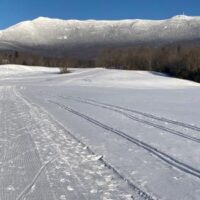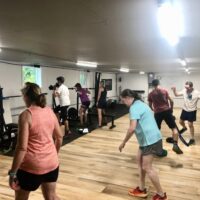From Jim Galanes Galanes Sports Lab Institute jimgalanes.com
As with all aspects of ski technique it is not possible to discuss and isolated issue because all of the movements in skiing are integrated. Modifications in one area can have an effect in other areas and the same applies to the poling movements and pole length. Having said that, I think the typical pole length recommendation of 83% and 90% of individual body height is a good range to maintain good balance between all movement patterns. I use poles at 85% for classic and 90% for skating. These lengths feel about right for me at this time and I would caution against going more than a two to two an d a half centimeter longer or shorter as it may have both technical and physical impacts on other aspects of ski technique.
There are multiple factors to consider when determining pole length. The primary considerations should include the whole body muscle activation patterns, the ski terrain, individual strength, technique, and the body height and position. There is most certainly a range of pole length that may work for an individual. But there is also a length that will be too long or too short that will limit the ability of the poling forces to produce power. Also remember, too long or too short a pole length can alter body position and technique in a way that may alter muscle activation patterns and other aspects of technique.
There are many interesting studies on poling forces and pole length that analyze muscle EMG activity and horizontal, propulsive and vertical poling forces. These studies are too complex to summarize in a short response but they can be captured in what we have experienced and feel on skis. Both the vertical and horizontal reactive forces play a role in the poling movements. So I believe there are good reasons to maintain a nearly vertical pole plant to load the poles and carry the body weight. Long poles may require a greater angle at pole plant! When skating first came along there was a significant push to use far longer poles thinking it would increase poling and gliding time. This did increase both the poling and glide time but did not increase the power output or the speed.
I believe we need to think in terms of the efficient production of power, fast force production, from the poling movements. A longer pole may make you feel strong in the poling movements but there is a big difference between exerting force on the poles and producing power efficiently. To increase speed we need to think about decreasing poling time. In short, the longer the poles, the longer the poling time.
Jim




Comments are closed.